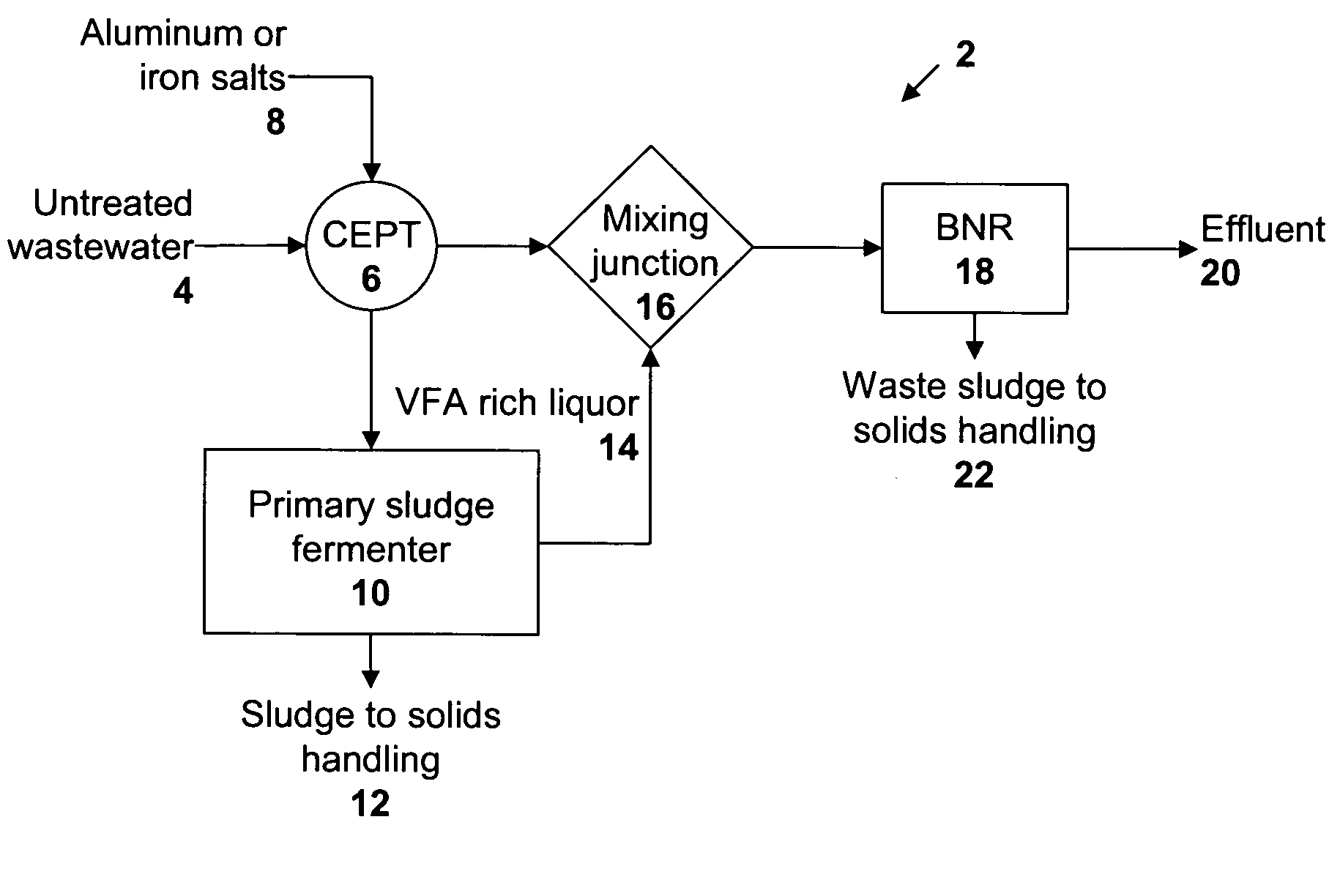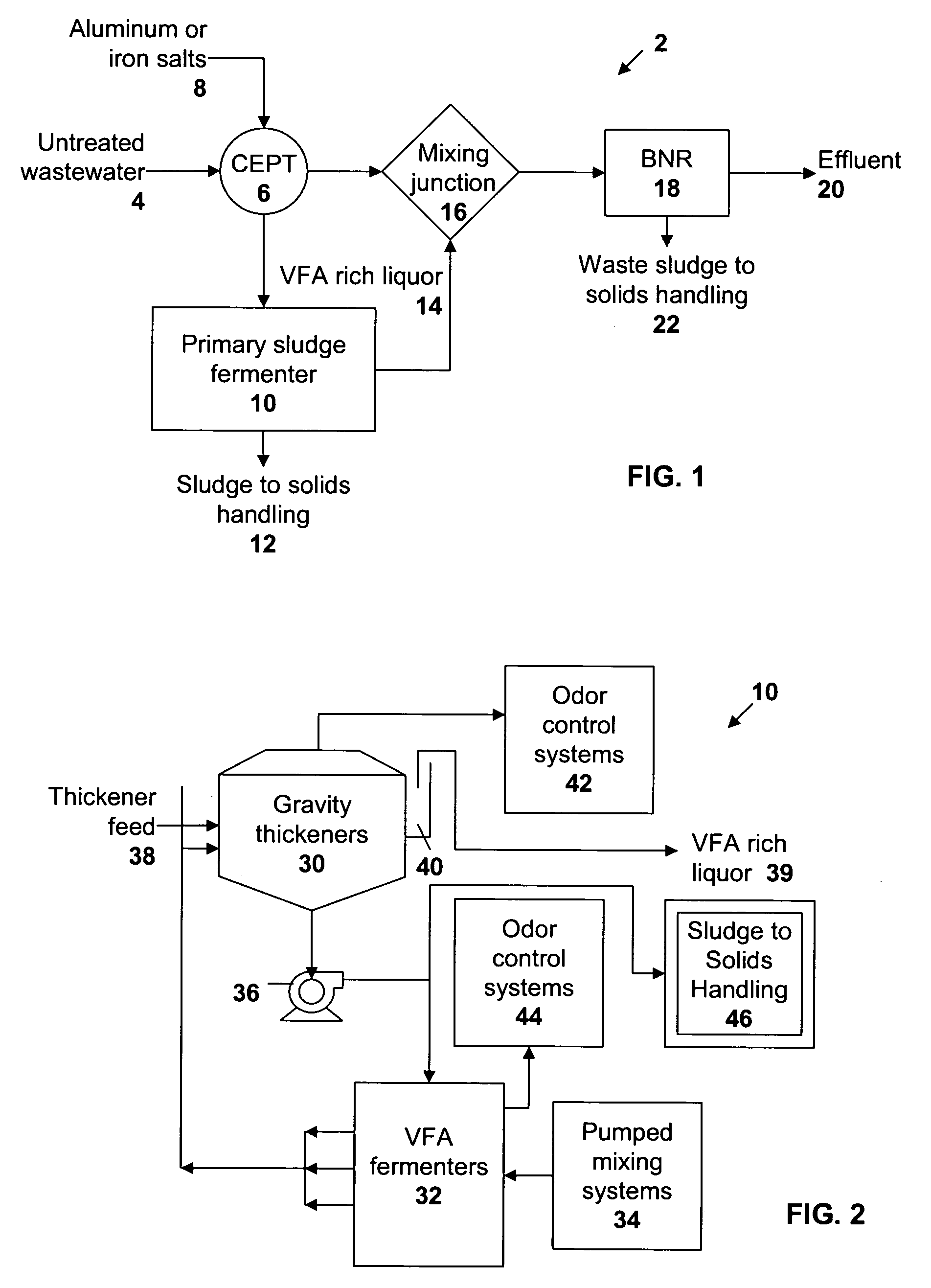Chemically enhanced primary sludge fermentation method
a technology of primary sludge and fermentation method, which is applied in the direction of filtration separation, multi-stage water/sewage treatment, separation process, etc., can solve the problems of increasing the overall production of vfas per unit mass of primary sludge, and achieves the effects of increasing effluent volatile fatty acid content, enhancing the separation of suspended organic matter, and increasing the level of vfas
- Summary
- Abstract
- Description
- Claims
- Application Information
AI Technical Summary
Benefits of technology
Problems solved by technology
Method used
Image
Examples
Embodiment Construction
[0027]FIG. 1 is a schematic representation of a wastewater treatment facility 2 suited for implementation of the process of the invention. The wastewater treatment method commences with a source of untreated or preliminary treated wastewater 4 which is provided to a primary treatment vessel 6. Metal salts, which can be iron or aluminum salts and possibly flocculants, are provided from a source of metal salts 8 to the primary treatment vessel 6 in a chemically enhanced primary treatment (CEPT) step. The chemical added in the CEPT step is typically stored in an aqueous or other solution in the source of metal salts 8 which can be a simple industrial tank. The chemical may be injected into a feed pipe between the source of untreated or preliminary treated wastewater 4 and the primary treatment vessel 6 or added directly to the primary treatment vessel. Although not shown on FIG. 1, it may be preferable to add the chemical to the wastewater in one or more separate mixing tanks or mixing...
PUM
| Property | Measurement | Unit |
|---|---|---|
| molar ratio | aaaaa | aaaaa |
| time | aaaaa | aaaaa |
| time | aaaaa | aaaaa |
Abstract
Description
Claims
Application Information
 Login to View More
Login to View More - R&D
- Intellectual Property
- Life Sciences
- Materials
- Tech Scout
- Unparalleled Data Quality
- Higher Quality Content
- 60% Fewer Hallucinations
Browse by: Latest US Patents, China's latest patents, Technical Efficacy Thesaurus, Application Domain, Technology Topic, Popular Technical Reports.
© 2025 PatSnap. All rights reserved.Legal|Privacy policy|Modern Slavery Act Transparency Statement|Sitemap|About US| Contact US: help@patsnap.com



